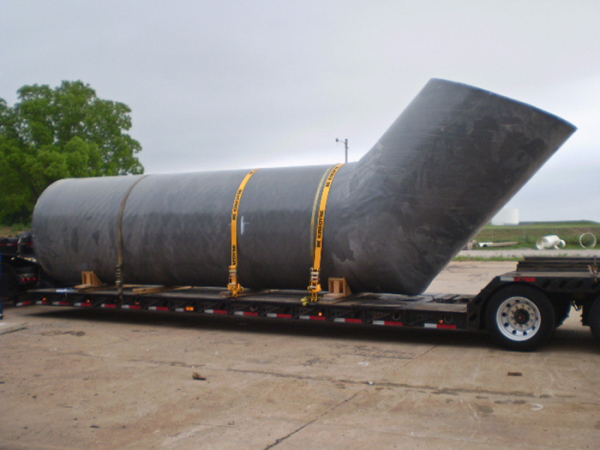Large Diameter Pipe for Water Circulating Project
The photo shows one of many large diameter pipe spools for a circulating water project. We worked closely with the customer’s installation contractor to meet their delivery needs. The jobsite had limited laydown area and to transport each pipe multiple times onsite was not economical or efficient. We staged pipe at our facility and held a strict production schedule to ship just in time.

Fiberglass reinforced composite resin “fiberglass pipe” has several benefits over traditional
ductile iron, concrete, thermoplastics and vitrified clay systems:
- lightweight and easy to handle compared to other materials.
- excellent chemical resistant in corrosive environments.
- high strength.
- very low Fluid flow resistance
- long life and durability
Fiberglass pipe is lightweight compared to ductile iron, concrete and vitrified clay. It can be easily moved into place during installation. Fiberglass pipe can be made with many different types of resin to meet the particular corrosive environments needed. Fiberglass welded joints have long wear compared to vitrified clay and concrete which may crack and be susceptible to chemical attack. Another benefit is that fiberglass pipe has a high strength ratio compared to thermoplastics. Lastly it has a very low Hazen-Williams Coefficient compared to steel and concrete. In some applications pump size can be reduced which reduces power consumption with money savings in yearly operating costs.
When you need fiberglass piping for your water circulating and waste water needs, call us here at Beetle Plastics to see how we can deliver a custom solution.





